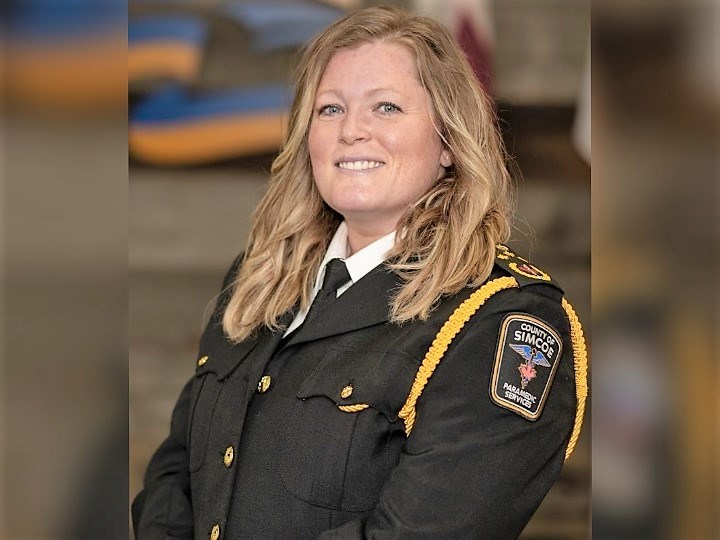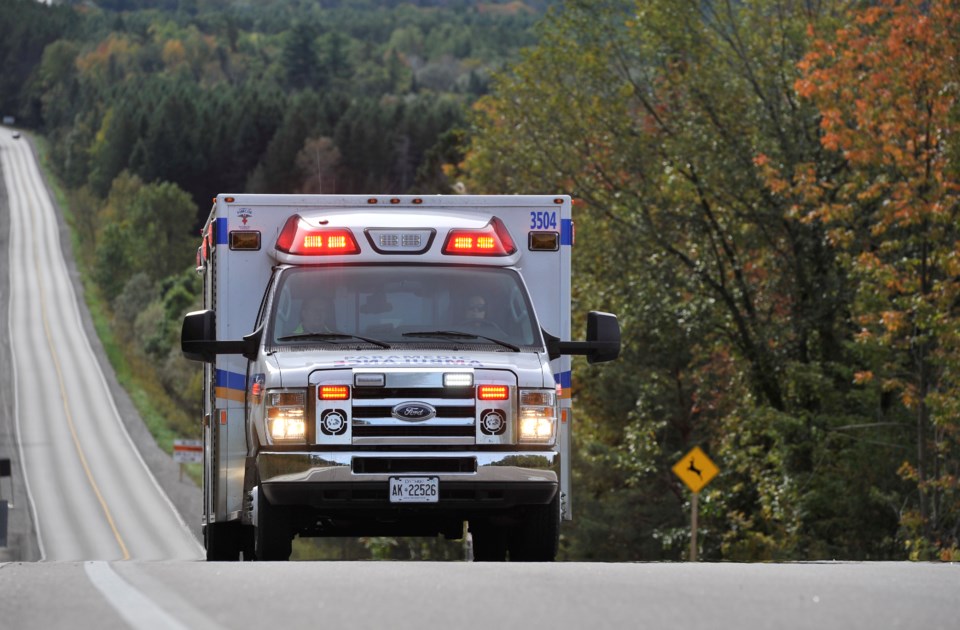County of Simcoe Paramedic Services is launching a one-year pilot program in an effort to better respond to 911 calls for patients with mental health needs.
The county received official approval for the Community Alternative Response Engagement (CARE) pilot program July 9 from Deputy Premier and Minister of Health Sylvia Jones.
According to a staff report presented during the Aug. 13 committee of the whole meeting, CARE is part of the continued model of care development under the updated Ambulance Act, 2019. Those amendments were enacted to provide certain 911 patients with care options other than being taken to an emergency department, noted the report, which also pointed out the changes allowed for the release of the new patient models of care by the Ministry of Health.
“Given the increasing prevalence of patients with complex mental health and addictions needs, staff have been working closely with our many community partners to identify additional resources and treatment options. As a result of these collaborative efforts, the County of Simcoe Paramedic Services have developed a new mental health model of care and was submitted to the Ministry of Health on March 1, 2024, for their consideration and approval,” explained chief Sarah Mills in the report.

As part of the development of the model of care, paramedic services — in partnership with the Canadian Mental Health Association (CMHA) and the Barrie Police Service — will pilot a specialized response team for mental health-associated 911 calls.
The program, she explained in the report, will be piloted for one year and then reassessed by the ministry for ongoing implementation.
Year 1 funding of $448,430, which was announced earlier this year, has supported the purchase of required vehicles, equipment and supplies, and the development of medical policy and protocols to support the initiative.
This mental health model of care — which was developed in collaboration with community partners including the CMHA, Waypoint Centre for Mental Health Care, all area hospitals, local Ontario Health Teams, Ontario Health Central, and the Sunnybrook Centre for Prehospital Care — explained Mills, offers “treat and refer” as well as “alternative destination” options for adult patients with mental health and addiction needs who call 911 for emergency medical service, and seeks to divert patients to more suitable services instead of exclusively transporting them to the closest emergency department.
Paramedics, she noted, will receive training in mental health and addiction assessment, threat de-escalation, and risk assessment, all of which is tentatively scheduled for this fall.
Paramedics will be better able to assess patients in order to determine whether they qualify for the treat and refer or alternative destination aspects of the model.
Alternative destinations, Mills explained in the report, will only be accessible to patients in the Royal Victoria Regional Health Centre (RVH) catchment area in order to “trial processes and prevent repatriation issues with other hospitals.”
“As part of the development of this mental health model of care, staff have been working with Ontario Health and community partners to include a specialized response unit to support individuals with mental health and addictions needs. This work is premised on similar models found in other jurisdictions that will consist of a community mental health worker and a paramedic mental health specialist that respond in real time to 911 mental health situations.”
The intent, explained the chief, is to trial this new specialized response program on a smaller scale initially, with the goal of expanding it across the region.
Under the treat and refer model, staff are working to implement a community response pilot attending to non-emergent, non-violent patients with specific mental health and addictions needs, she noted, adding the hope is council will approve the hiring of a community paramedic and a CMHA social worker trained to assess, provide mental health support and minor medical care, de-escalate, and connect to community services.
“Given the critical mass needed to adequately evaluate the success of a new model, the proposed CARE team anticipates one-time funding over a four-year period to introduce this pilot within the RVH catchment area as Phase 1 of the implementation roll-out. The CARE team will continue to initiate regionally, as additional resources and alternative destination options are confirmed,” noted Mills, adding the CARE team will initially respond through paramedic referrals through 911 responses and Barrie police communications.
Patients who need immediate acute mental health and addictions care, she added, will continue to be treated and taken by paramedics to the closest emergency department for stabilization as per Ministry of Health requirements.
If the patient’s needs are assessed as less urgent, they may be referred to community paramedicine for referral navigation and support.
“If the patient does not require emergency medical services, under this new model they may be transported (to an) alternate destination or referred to appropriate mental health and addictions services. If the patient does not meet the model criteria or the patient or substitute decision maker requests transport to the emergency department, or the patient condition indicates that emergency measures should be considered, then the paramedics will revert to transportation directly to the appropriate emergency department,” explained Mills.
Information will be collected from existing ambulance call reports, patient and care provider experience surveys, provider comfort surveys and existing healthcare system data, and provided to the ministry at set intervals after the program launches. It will be evaluated for 12 months post-launch and then will be re-evaluated by the ministry for permanent implementation consideration.



